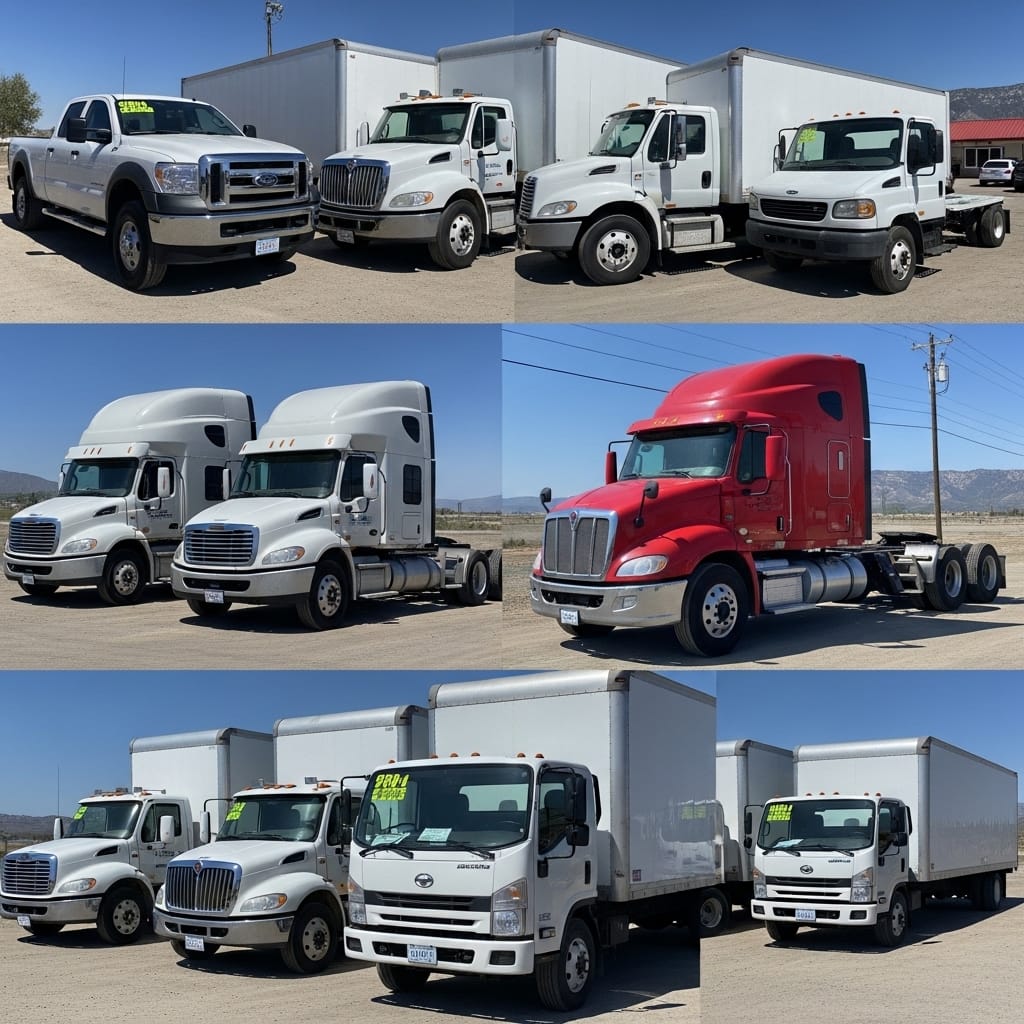
The Ultimate Guide to Finding the Best Trucks for Sale Near You
There comes a time in many of our lives when the need for a truck becomes undeniable. Maybe you’re a weekend warrior with a boat to tow, a homeowner with endless DIY projects, or a professional who needs a reliable workhorse to get the job done. Whatever your reason, the search often begins with the same four words typed into a search bar: “trucks near me for sale.” It’s a simple query that opens up a world of possibilities, but it can also be the start of a daunting journey. The sheer volume of options, the debate between new and used, and the fear of making a bad investment can be overwhelming. Fear not. This comprehensive guide is designed to be your roadmap, transforming you from a hopeful searcher into a confident buyer. We’re going to break down every step of the process, ensuring you have the knowledge and tools to find the perfect truck that not only meets your needs but also fits your budget, right in your own backyard.
Step 1: The Digital Dragnet – Where to Find Local Truck Listings
Your quest for the perfect truck begins on the screen. The internet has revolutionized car shopping, bringing the inventory of countless dealerships and private sellers directly to your fingertips. Knowing where to look is the first and most crucial step.
Major Online Marketplaces

Websites like Autotrader, Cars.com, and Edmunds are the heavy hitters in the online vehicle-listing world. They are essentially massive digital car lots. You can filter your search by make, model, year, price, mileage, and, most importantly, distance from your zip code. These platforms aggregate listings from thousands of dealerships, giving you a broad overview of the market. They often include valuable tools like price analysis, which tells you if a listing is a great, good, or fair deal based on similar vehicles in your area. You can also find detailed vehicle history reports, user reviews of dealerships, and a wealth of information to help you compare different trucks.
Dealership Websites
If you have a preference for a specific brand—be it Ford, Chevy, Ram, Toyota, or another—going directly to the websites of local dealerships can be a smart move. They will have the most up-to-date information on their new and certified pre-owned (CPO) inventory. CPO programs are particularly noteworthy. A CPO truck is a used vehicle that has been thoroughly inspected, refurbished, and certified by the manufacturer. It comes with an extended warranty, offering a level of peace of mind that you won’t typically get with a standard used truck. Signing up for a dealership’s email newsletter can also alert you to special promotions and new arrivals.
The Peer-to-Peer Platforms
Don’t overlook platforms like Facebook Marketplace and Craigslist. These are the modern-day classifieds, and you can often find hidden gems and great deals from private sellers. Buying from a private party can sometimes mean a lower price, as there’s no dealership overhead to cover. However, this path requires a higher degree of caution. You are the one responsible for vetting the seller, inspecting the vehicle thoroughly, and handling all the paperwork. Scams can be more prevalent, so it’s essential to be vigilant. Always meet in a safe, public place, never go alone, and never transfer money before you have seen the truck and have the title in hand.
Step 2: New vs. Used – The Great Truck Debate
This is one of the most significant decisions you’ll make. Both new and used trucks have compelling arguments, and the right choice depends entirely on your financial situation and personal preferences.
The Allure of a Brand-New Truck
There’s nothing quite like the feeling of being the first owner of a vehicle. The odometer has minimal miles, the interior has that intoxicating new-car smell, and every surface is flawless. Beyond the sensory experience, a new truck offers tangible benefits. It comes with a full manufacturer’s warranty, typically for three to five years, which covers most mechanical and electrical components. This provides incredible peace of mind. You also get the latest in technology, safety features, and fuel efficiency. Furthermore, when you buy new, you can often customize the truck to your exact specifications, choosing the color, trim level, engine, and optional features you desire. The primary downside, of course, is the cost. New trucks are expensive, and they begin to depreciate the moment you drive them off the lot.
The Smart Savings of a Used Truck
For many buyers, a used truck is the more financially savvy option. The biggest advantage is the cost savings. Thanks to depreciation, a truck that is just two or three years old can be significantly cheaper than its brand-new counterpart, while still offering many of the same modern features and reliability. You let the first owner absorb the steepest part of the depreciation curve. This means your money goes further, potentially allowing you to afford a higher trim level or a more powerful model than you could if you were buying new. The selection is also vast; you have decades of models and styles to choose from. The main drawback is the increased risk. The truck has a history, and it may not always be a good one. There’s no factory warranty (unless it’s a CPO vehicle), so you are responsible for any repairs that pop up. This is why a pre-purchase inspection is not just recommended; it’s essential.
Step 3: Defining Your Needs – What Kind of Truck Do You Really Want?
The word “truck” covers a wide range of vehicles. Before you get too deep into your search, you need to honestly assess what you’ll be using it for. Buying a massive, one-ton dually when you just need to haul some mulch from the home improvement store is a recipe for wasted money and frustration at the gas pump.
- Light-Duty Trucks (Half-Ton): This is the most popular category, including iconic models like the Ford F-150, Ram 1500, and Chevrolet Silverado 1500. They are the jack-of-all-trades, perfect for daily driving, light towing of boats or small campers, and general hauling. They offer a comfortable ride and a good balance of capability and fuel economy.
- Heavy-Duty Trucks (Three-Quarter-Ton and One-Ton): If you have serious work to do, you need to step up to the big leagues. Trucks like the Ford F-250/F-350, Ram 2500/3500, and Silverado 2500HD/3500HD are built for heavy-duty towing and hauling. They have more robust frames, more powerful engines (often with a diesel option), and beefier suspensions. They are the go-to choice for hauling large fifth-wheel trailers, heavy equipment, and massive payloads. Their ride is stiffer and their fuel economy is lower, making them less ideal for a daily commute.
- Mid-Size Trucks: Models like the Toyota Tacoma, Ford Ranger, and Chevrolet Colorado offer a smaller, more maneuverable package. They are easier to park and more fuel-efficient than their full-size brethren, while still offering a useful amount of towing and hauling capability. They are an excellent choice for those who want truck utility without the full-size footprint.
Step 4: The Pre-Purchase Inspection – Becoming Your Own Detective
You’ve found a promising-looking truck online. Now comes the most critical phase for any used vehicle purchase: the in-person inspection. Do not be shy about this. A thorough examination can save you from a world of future headaches and expenses.
Exterior Walk-Around
Start by walking around the truck. Look for signs of accidents, such as mismatched paint, uneven gaps between body panels, or overspray on the trim. Crouch down and inspect the frame for rust, especially if you live in an area where roads are salted in the winter. Frame rust can be a deal-breaker. Check the tires for tread depth and uneven wear, which could indicate alignment problems. Look inside the truck bed for signs of heavy use or abuse.
Under the Hood
Open the hood and look for any obvious leaks, cracked hoses, or frayed belts. Check the oil dipstick; the oil should be brown or black, not milky (which could indicate a head gasket issue) or gritty. Check the transmission fluid; it should be reddish-pink and not smell burnt. While you’re not expected to be a master mechanic, a basic visual inspection can reveal major red flags.
Interior Check and Test Drive
Inside, test every button, switch, and knob. Turn on the air conditioning and the heat. Test the stereo, power windows, and locks. Look for excessive wear on the seats and steering wheel, which can indicate that the mileage might be higher than what the odometer shows. The test drive is your chance to see how the truck feels on the road. Drive it in various conditions—city streets, highways, and, if possible, on some rougher pavement. Listen for any unusual noises from the engine, transmission, or suspension. Does the truck pull to one side? Do the brakes feel spongy or make grinding noises? Be thorough and trust your gut.
The Professional Opinion
If you’re serious about a used truck, always invest in a pre-purchase inspection by a trusted, independent mechanic. For a relatively small fee, a professional can put the truck on a lift and spot issues that you would never be able to see. This is the single best way to protect yourself and can either confirm that you’ve found a great vehicle or save you from a costly mistake.
Step 5: Sealing the Deal – Negotiation and Paperwork
You’ve done your homework, inspected the truck, and you’re ready to buy. It’s time to negotiate. Research the truck’s market value on sites like Kelley Blue Book (KBB) or NADAguides. This gives you a powerful starting point. Make a reasonable initial offer based on your research and the truck’s condition. Be polite but firm. Point out any flaws you found during your inspection that might warrant a lower price. Be prepared to walk away if you can’t agree on a fair price; there will always be other trucks.
Once you’ve agreed on a price, the final step is the paperwork. If you’re at a dealership, their finance department will handle most of this. If you’re buying from a private party, ensure the seller has the title and that the Vehicle Identification Number (VIN) on the title matches the VIN on the truck. You will both need to sign the title to transfer ownership. Check with your local DMV for the specific requirements in your state. Secure your financing and insurance before you finalize the purchase.
Finding the right truck near you is a journey, but it doesn’t have to be a stressful one. By arming yourself with knowledge, being diligent in your research and inspections, and having the confidence to negotiate, you can navigate the market like a pro. The open road and your perfect truck are waiting. Happy hunting!







